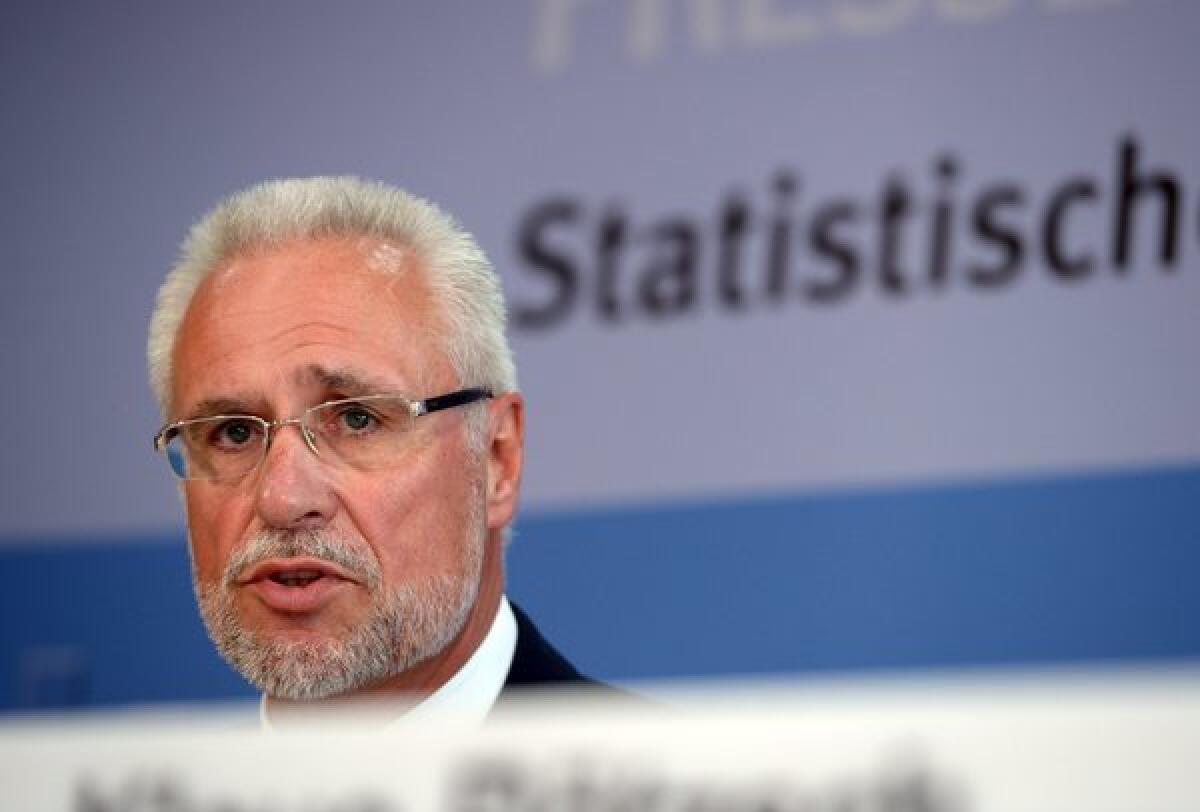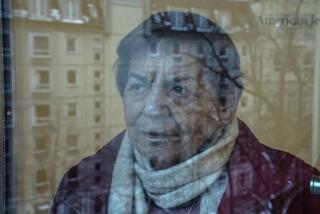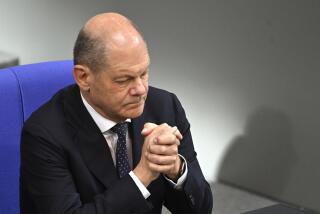East-west split endures in Germany, new census figures show

BERLIN — More than two decades after the Berlin Wall came down, Germany’s eastern half remains a very different place from the west — older, whiter and more likely to be out of work, according to results published Friday from the country’s first census since reunification.
Unemployment rates in the five states that made up Communist East Germany ranged from 3.3% to 4.4% in the nationwide survey, which was conducted in May 2011. By contrast, the jobless rate in the former West Germany ranged from 1.7% in Bavaria to 2.8% in North Rhine-Westphalia. The exceptions in the west were the cities of Hamburg and Bremen, which are both states in their own right and had jobless rates of 3.5% and 3.7%, respectively.
Germany is also aging as a whole. After years of declining fertility, the country has 17 million inhabitants who are over 65 (21.2% of the total), compared with just 12 million children under 18 (15.7%). But this measure, too, shows a geographical split. In the east, the share of over-65s ranges from 22.1% in Mecklenburg-Western Pomerania to nearly a quarter of the population in Saxony. In the west, the proportion of over-65s falls to 19.4% to 22.1%.
The census pegs Germany’s population at 80.2 million, making it the most populous nation in the European Union. But the figure is 1.5 million fewer than what the government had projected as the 2011 population based on the previous census, in West Germany, in 1987. The shortfall is largely due to a higher number of foreign nationals — 1.1 million — leaving the country than expected.
Nearly one in five of the German population has a migrant background. People with Turkish origins make up the single-biggest group with roots outside Germany. Gastarbeiter, or “guest workers,” of Italian, Greek and Turkish origin helped provide labor for West Germany’s rapid economic recovery after World War II.
Berlin is younger and far more cosmopolitan than its eastern hinterland; 31% of the capital’s population are under 29, and a shade under 24% have a migrant background. Fitting its mayor’s description that it is “poor but sexy,” Berlin, which is classified as a federal state in its own right, has the highest unemployment rate of any state, 4.9%.
There are just under 34,000 registered same-sex partnerships in Germany, 40% of which are between women, the census shows. A total of 5,700 children live with same-sex parents, most of them (86%) with parents who are both women. Germany does not officially recognize same-sex marriage but has had same-sex civil partnerships since 2001.
The country’s foreign minister, Guido Westerwelle, is among those who have taken advantage of the change in the law to register a relationship.
ALSO:
Defense Secretary Chuck Hagel heads for Asia
Greek government in disarray over anti-racism bill
Human rights experts, activists push for ban on ‘killer robots’
More to Read
Start your day right
Sign up for Essential California for news, features and recommendations from the L.A. Times and beyond in your inbox six days a week.
You may occasionally receive promotional content from the Los Angeles Times.






